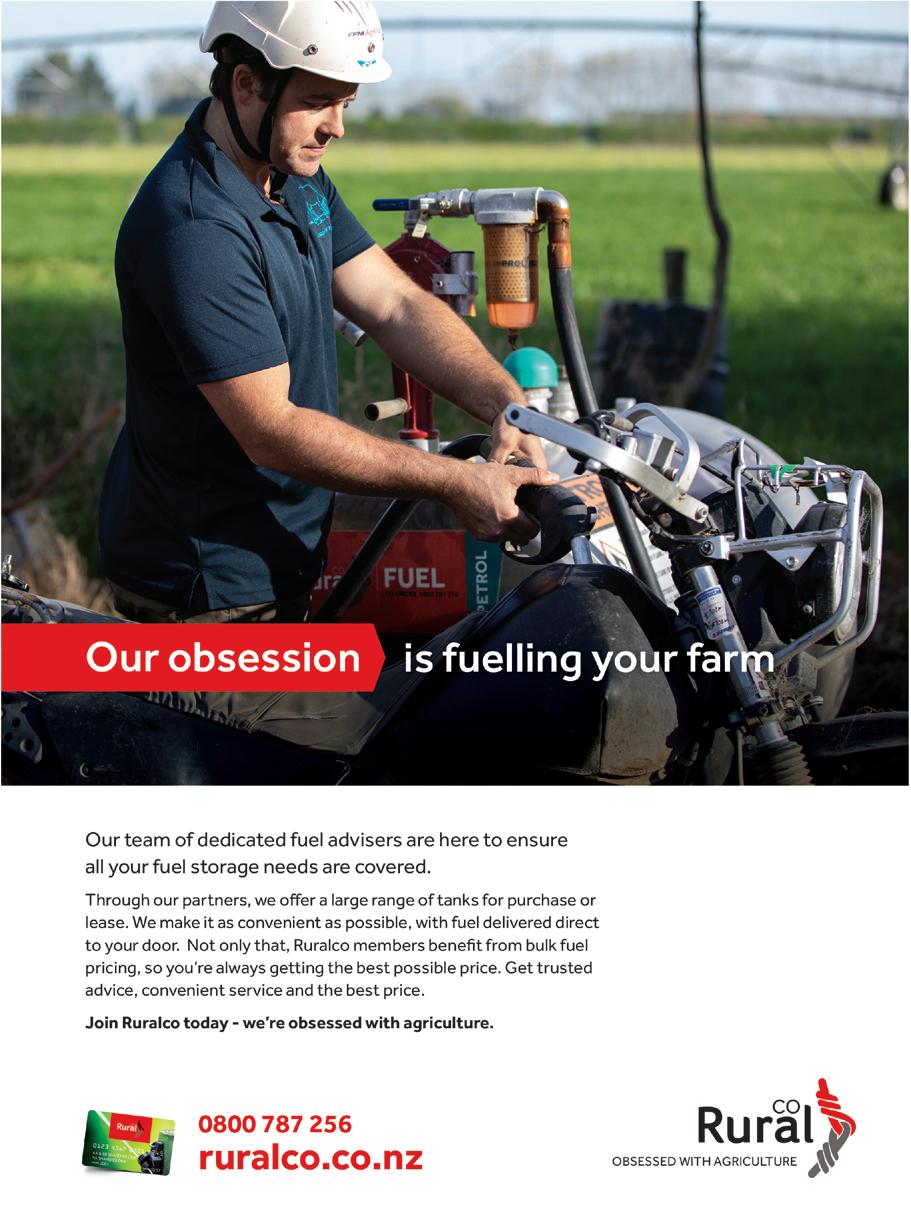
5 minute read
Agritech ushers new era for sector earnings
by Ruralco
After years of languishing behind nations like Israel, the Netherlands and the United States, New Zealand’s agritech sector is staring to find a head of steam, delivering on its promise to become a top tier export earner for New Zealand.
As an export earning sector generating bout $1.4 billion a year the sector has long looked to the likes of Israel for what could be achieved, where earnings from the sector are almost 10 times what New Zealand has achieved. While not often appreciated here at home, much of the impetus for the agritech sector to grow faster has come from a range of catalysts influencing how farmers can operate in New Zealand. With increasing pressure to “mark and measure” farm environmental footprint, bought on by market expectations and government regulations, comes a need for more digitised monitoring equipment and software to manage the data flood internet enabled equipment is capable of generating. At the same time farmers have been seeking greater per head productivity from livestock, rather than simply growing a farm’s scale to achieve increased gross income.
Advertisement
The increased attention paid to individual animal performance, and a need for equipment to monitor and understand that performance, has done much to drive New Zealand’s agritech evolution. With the advances in sensors and monitoring technology has come an explosion of data generated by them. Estimates by research company Business Insider Intelligence are that an average farm will generate one million data points every day by next year, compared to only 100,000 in 2014. This puts New Zealand agriculture on the cusp of what describe as a “fourth revolution”, where this surge in data and sensor feed into artificial intelligence and machine learning systems. Agritech New Zealand CEO Brendan O’Connell attributes much of the recent activity in the sector to the early successes of the Agritech Industry Transformation Plan (ITP). The ITP aimed to address some of the roadblocks to New Zealand’s emerging tech industry, including access to finance, and identifying disruptive technology capable of dealing with some of agriculture’s tough nutrient issues. The launch of the industry’s Finistere Aotearoa Fund, a $42 million source of venture capital underwritten by the NZ Growth Capital Partners was a key milestone announced earlier this year. O’Connell says it will do much to address the disparity between the likes of New Zealand and Israel, and help companies here avoid the “valley of death” that often befalls software companies in particular that find themselves unable to expand beyond a small New Zealand market and into the wider world. “New Zealand is now also recognised as a key mover in the region for startup potential, and is ranking ninth globally,” he says. The numerous start-up companies now scattered throughout New Zealand are now finally aligning with funding opportunities, with more venture capital options catching up, in part buoyed by the government sponsored Capital Partner fund. Investors looking to New Zealand are often surprised by this country’s sophisticated innovation, and ability to attract young, talented staff to a country that offers a considerably lower cost structure than traditional “techie” hubs like Silicon Valley.
However, one of the greatest and most recent constraints to growth potential for firms is the availability of good talent. Prior to Covid almost 80% of the industry’s new talent was sourced from overseas, a pool that has now all but dried up. “We know this is a significant concern to many of our members and the wider tech community,” says O’Connell. “We are forming an agritech skills reference group to collaborate with other initiatives focused on skills and workforce gaps. Our intent is to lean into the shared responses and highlight the unique challenges for agritech businesses like finding talent that translates data science with biological systems. “We are working with our partners in NZTech to understand the realities of critical worker border exemptions.” The sector is also doing what Kiwis do well, collaborate, including signing on with AgTech Ireland to help identify collaborative opportunities that will mutually benefit members of both countries’ organisations. Given the reliance of both upon pastoral production and the challenges faced in reducing green-house gas emissions, this area may prove the source of an early and fruitful result.
Current research for a “methane vaccine” is a possible agritech solution that may have global consequences, with a huge and ready market for a treatment method already widely acceptable to most farmers. Fonterra has been closely involved in the research work. Head scientist Dr Jeremy Hill is optimistic that in the coming five years there is likely to be a breakthrough on technology that will also capitalise on the world’s increased vaccine production capacity, resulting from the covid pandemic. One of the most disruptive technologies starting to make its presence felt on dairy farms is more about what becomes invisible in its wake. Several companies have been developing collars for cows that enable them to be controlled and monitored remotely and graze without the physical constraints of permanent or temporary fences, or gates. The slightly surreal sight of cows grazing behind invisible “wires” can be off putting for anyone witnessing the tech for the first time, and even more so when the collars direct cows into new breaks, or through an invisible gate and up to the farm dairy for milking. Cows can be scheduled to exit paddocks at different times, with their movement directed through a series of sounds they have been taught to interpret and respond to. There has been intense interest from farmers in the systems, with many keen to break out of the usual rigid routine dairying demands with twice a day milking and the demands of rounding up cows and setting up fences. With the agritech sector aiming to achieve $2.0 billion of export earnings within only three years, farmers here in New Zealand are providing the test bed and often the innovation source for a sector that is maturing rapidly, with capital matching innovation to ensure good ideas are getting beyond the lab, the farm shed or the factory floor.













